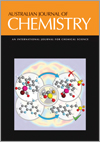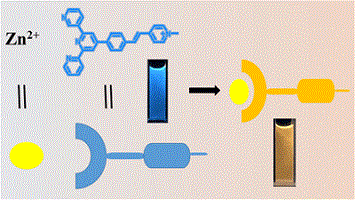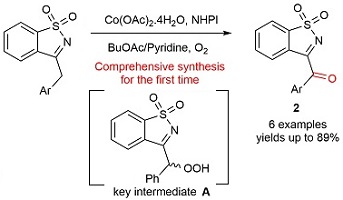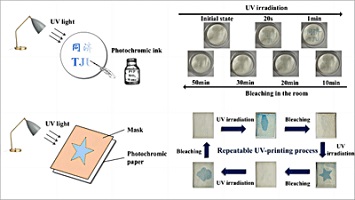Australian Journal of Chemistry
Volume 77
Number 1 2024
The process of engaging chemistry academics across multiple institutions in conversations to establish consensus regarding measuring chemistry threshold learning outcomes (CTLOs) is complex. Brian Yates adopted a unique leadership approach by combining relational, distributed and collaborative leadership in initiating and supporting chemistry academic communities of practice (CoPs). (Image credit: Gwendolyn Lawrie.)
This article is part of the collection: Dedication to Brian Yates.
We designed and synthesized a new fluorescent probe G based on 4-bromobenzaldehyde, CH3I and 4-vinylpyridine. Probe G formed a 1 : 1 complex with Zn2+ that produced a large fluorescence enhancement and a red shift of ~95 nm. Under ultraviolet light, on addition of Zn2+, the fluorescent color of probe G changed from blue to yellow. The tripyridine derivative probe G can quickly detect and identify zinc ions with high selectivity and a low detection limit in aqueous solution. (Image credit: Qinghong Bai.)
Four 2-D Ln-CPs [Ln = La (1), Pr (2), Sm (3), Eu (4)] based on mixed ligands, 2-[(4-carboxyphenyl)methoxy]benzoic acid (H2cob) and 1,10-phenanthroline (phen), were prepared and characterized. Complexes 3 and 4 show luminescence of the trivalent lanthanides. (Image credit: Lixin You.)
A novel Co(OAc)2/NHPI-catalyzed oxidation of 3-arylmethyl sulfonyl imines to prepare 3-arylcarbonyl analogues has been realized. 3-Arylcarbonyl sulfonyl imines were comprehensively synthesized from benzyl substrates for the first time. The reactions proceeded in moderate to excellent yields. Mechanistic investigation suggests that alcohol compounds A are the key intermediates for the formation of products 2. (Image credit: Gan Haifeng.)
The doping of WO3 with transition metal elements significantly optimised its photochromic properties. Mo changed the colour after UV irradiation and Cu increased the fading rate of WO3. Photochromic ink and photochromic rewriting paper were prepared using the obtained photochromic powders with a cycle life of more than 50 times. (Image credit: Xuhui Jin.)






![Schematic showing the complexation of 2-[(4-carboxyphenyl)methoxy]benzoic acid and 1,10-phenanthroline with various lanthanides and the resulting 2-D structure formed.](/temp/CH23149_TOC.jpg)



